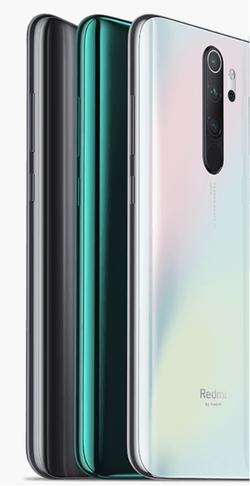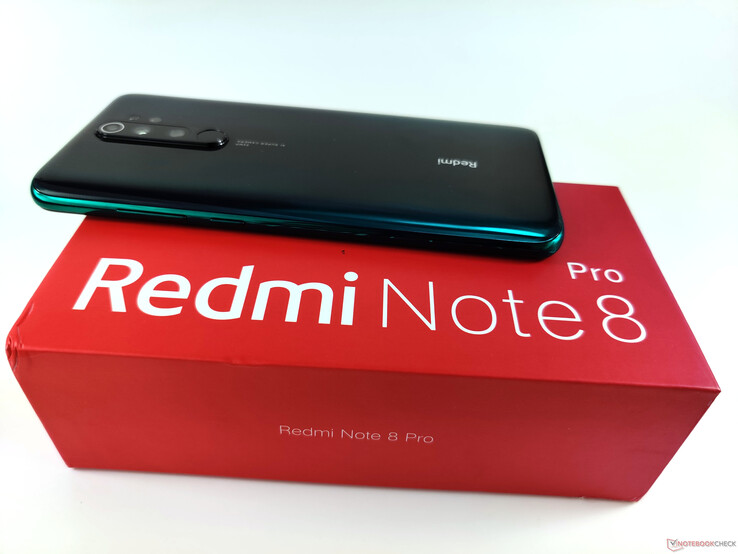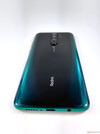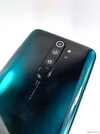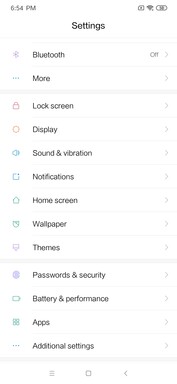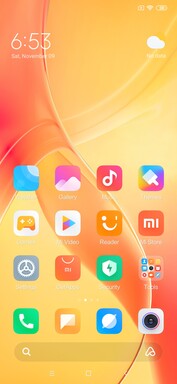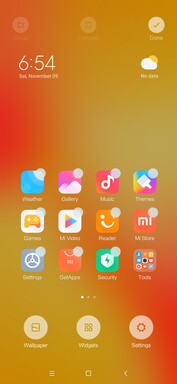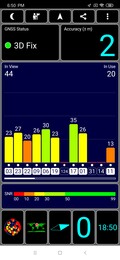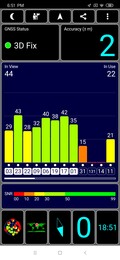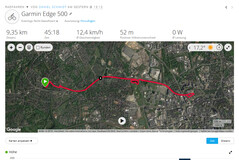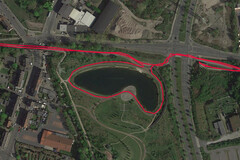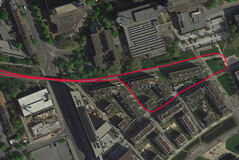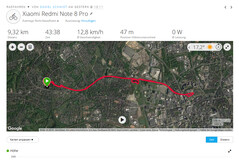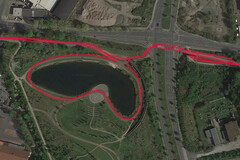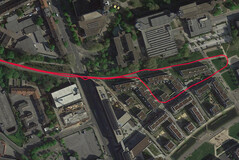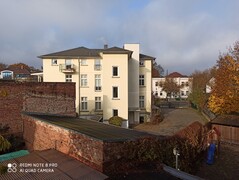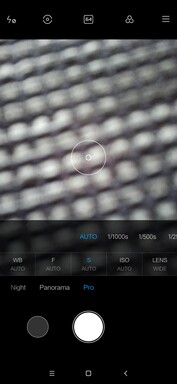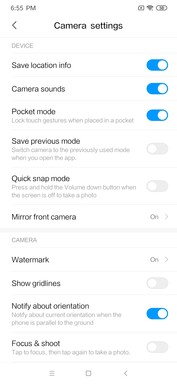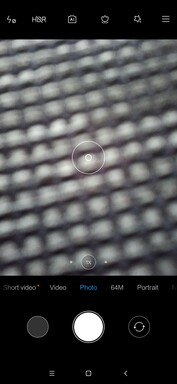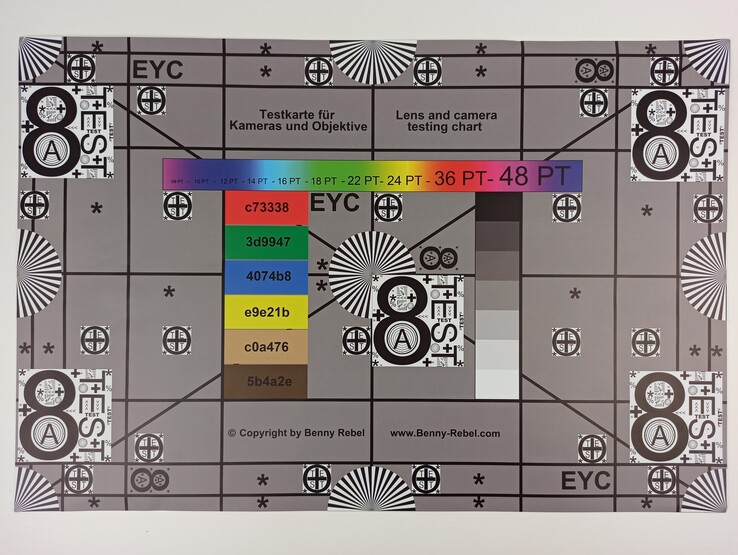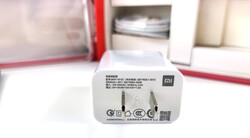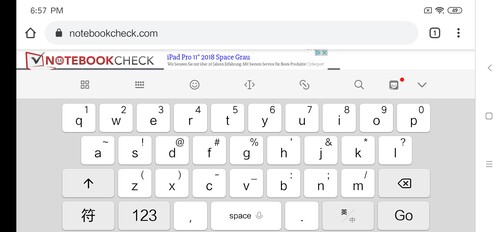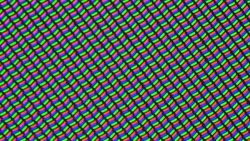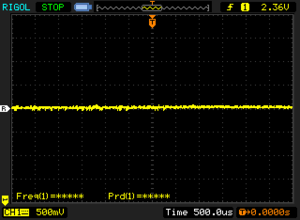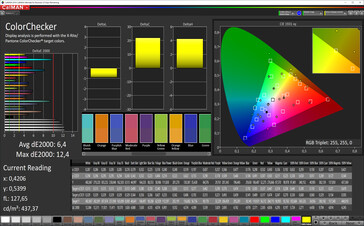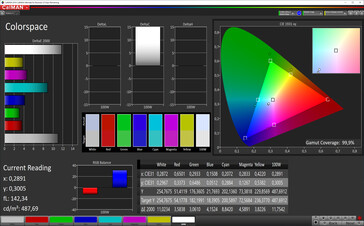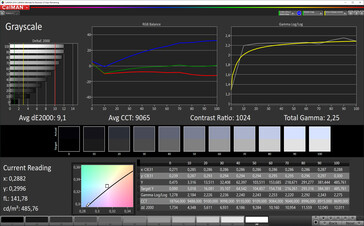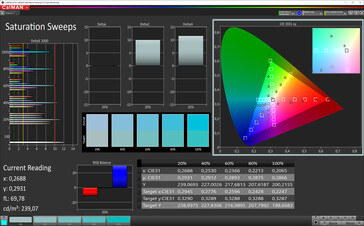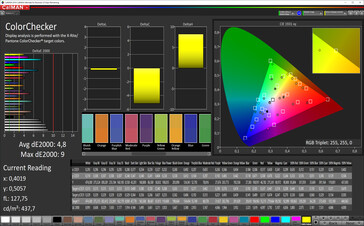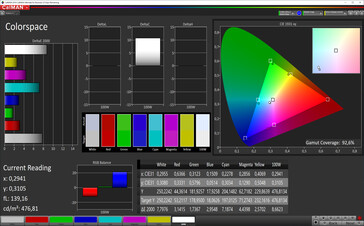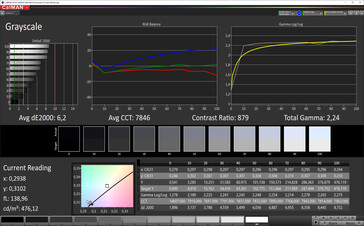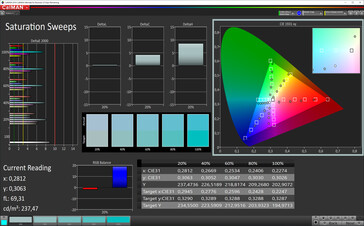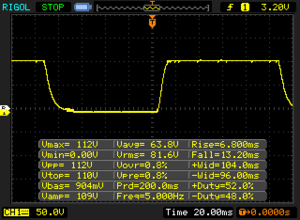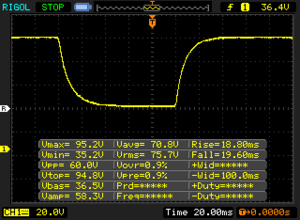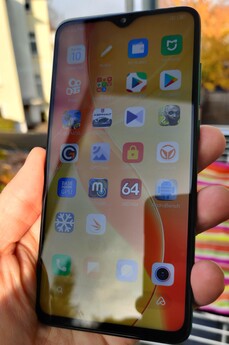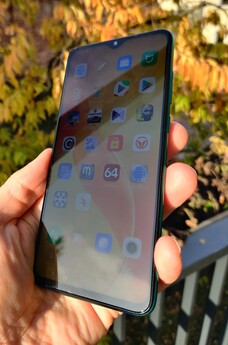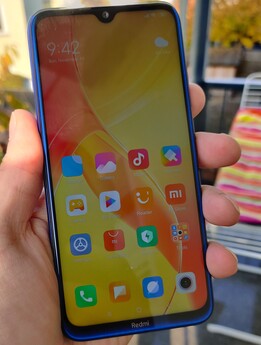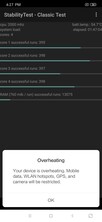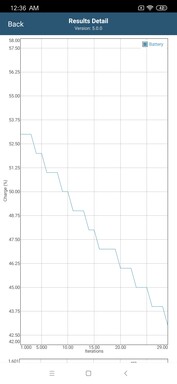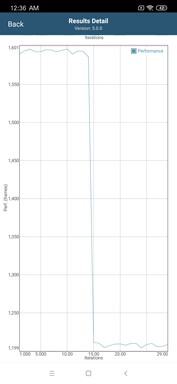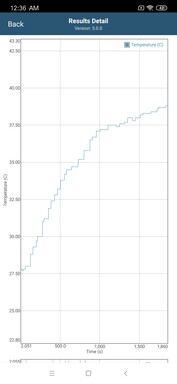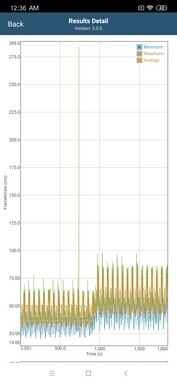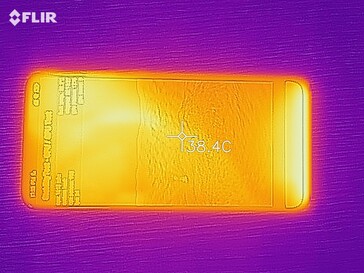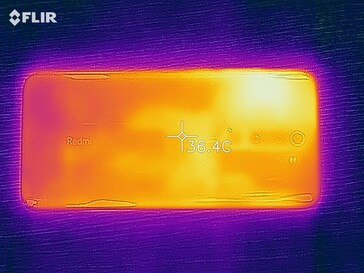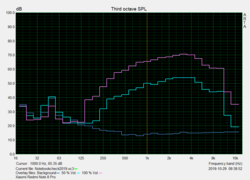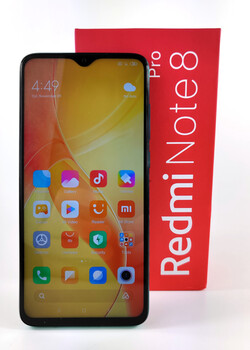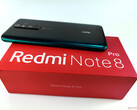Xiaomi Redmi Note 8 Pro Smartphone Review: Pseudo Gaming SoC meets 64-MP Cam
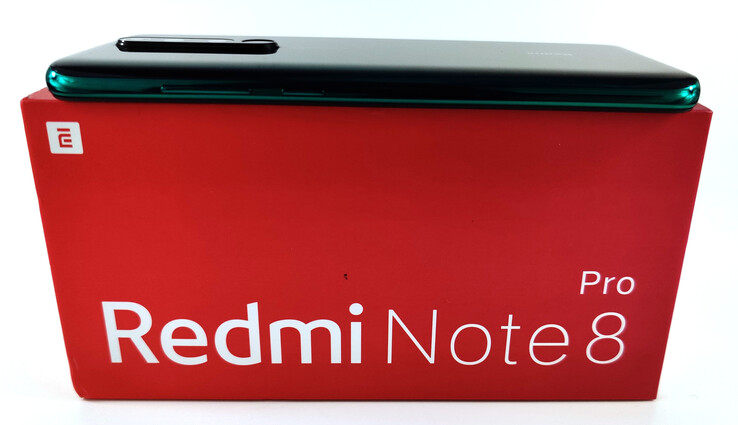
With the Redmi Note 8 Pro, the Chinese Smartphone brand is mainly trying to appeal to gamers. Here, the Qualcomm SoC of the lower-powered Redmi Note 8 has been replaced by the gaming-focused MediaTek Helio G90T. Similarly, the storage and memory configurations have been upgraded to the faster UFS type and 6 GB of dual-channel LPDDR4X, respectively.
Additionally, the Redmi Note 8 Pro comes with a large 6.53-inch IPS display and a native resolution of 2,340 x 1,080 pixels. The back is reminiscent of the Note 8 due to the four cameras, although here, the main camera has a very high resolution of 64 MP as opposed to just 48 MP on the Note 8.
The Note 8 Pro with 64 GB of internal storage can be purchased for about 220 Euros (~$244) from local retailers. Users can expect the top configuration with 128 GB of storage space to be available for around 260 Euros (~$266).
Competing Devices
Rating | Date | Model | Weight | Drive | Size | Resolution | Price |
|---|---|---|---|---|---|---|---|
| 80.7 % v7 (old) | 11 / 2019 | Xiaomi Redmi Note 8 Pro Helio G90T, Mali-G76 MP4 | 200 g | 128 GB UFS 2.0 Flash | 6.53" | 2340x1080 | |
| 88 % v6 (old) | 05 / 2019 | Xiaomi Mi 9 SE SD 712, Adreno 616 | 155 g | 128 GB UFS 2.0 Flash | 5.97" | 2340x1080 | |
| 83.9 % v6 (old) | 04 / 2019 | Sony Xperia 10 SD 630, Adreno 508 | 162 g | 64 GB eMMC Flash | 6.00" | 2520x1080 | |
| 78.3 % v7 (old) | 05 / 2019 | Huawei P30 Lite Kirin 710, Mali-G51 MP4 | 159 g | 128 GB eMMC Flash | 6.15" | 2312x1080 | |
| 79.2 % v7 (old) | 11 / 2019 | Xiaomi Redmi Note 8 SD 665, Adreno 610 | 190 g | 128 GB eMMC Flash | 6.30" | 2340x1080 | |
| 79.1 % v7 (old) | 05 / 2019 | Samsung Galaxy A40 Exynos 7904, Mali-G71 MP2 | 140 g | 64 GB eMMC Flash | 5.90" | 2340x1080 | |
| 79.8 % v7 (old) | 04 / 2019 | Samsung Galaxy A50 Exynos 9610, Mali-G72 MP3 | 166 g | 128 GB UFS 2.1 Flash | 6.40" | 2340x1080 |
Case - Redmi Note 8 Pro with Waterdrop-Style Notch
The front of the Redmi Note 8 Pro consists of fifth generation scratch-resistant Corning Gorilla Glass, which sits flush with the frame. The thin frame surrounds the 6.53-inch IPS display on all sides. Thanks to the waterdrop-style notch, the bezels on the top of the display is fairly small as well. The curved back also benefits from Gorilla Glass 5 protection. In terms of colors, there is a gray, green and a white model. Thanks to the rounded-off sides, the 8.8 millimeter (~0.35 inches) thick case is easy to grip. While the Note 8 Pro is not waterproof, it comes with an IP 52 certification that signals dust and splash water resistance.
The build quality and materials look and feel very high quality. The buttons on the right edge are held firmly in place.
Features - Note 8 Pro with 3.5-mm Jack
In terms of features, the Redmi Smartphone not only includes a "traditional" 3.5-mm audio jack, but also a status LED and Miracast, the latter of which allows wireless media streaming to external screens, as well as an IR blaster. While the USB port now has the USB type-C shape, the underlying technology is still USB 2.0. On top of that, USB-OTG is available, which allows the device to recognize external storage drives or input devices. Our test device has 128 GB of internal UFS storage that can be expanded to up to 512 GB via the microSD card slot. The exFAT file system is supported.
Since the Chinese version of the Note 8 Pro is only rated for the Widevine DRM level L3, our test model does not support HD video playback from Netflix, Amazon Prime Video or other video streaming services. According to several reports, the international version of the midrange smartphone has completed the certification process for Widevine L1, however.
Software - Redmi Note 8 Pro with MiUI 10
As of this writing, the operating system Google Android 9.0 as well as the security patches from October 2019 are still fairly recent. Layered on top of the OS is the manufacturer's own MiUI 10.4. MiUI is a heavily customized user interface that barely has any resemblance to stock Android. Visual changes aside, the system software offers numerous customization options.
On the Chinese version of the Note 8 Pro, the manufacturer's MiUI software does not support Google services such as the Play Store ex-factory. Instead, only Chinese services and Xiaomi's own services are available. By contrast, the internationally available Redmi phone has access both to the usual Google services and various language options on top of Chinese and English (e.g. German).
Communication and GPS - Note 8 with an Accurate GPS
In terms of communications modules, the Chinese manufacturer relies on the contemporary Bluetooth 5.0 standard. An NFC chip for near-field communication is available as well, allowing users to make wireless payments via Google Pay - this feature is exclusive to the international version, however. Furthermore, only the international version's mobile broadband modem supports all of the LTE frequencies relevant to Germany - even the increasingly important LTE band 28 can be used. The Chinese version, on the other hand, cannot connect to LTE band 20 or 28 networks.
The dual-SIM phone has room for two nano-SIM cards. Neither one of the card slots is limited in terms of supported frequencies. Users can also choose to only use one SIM card and use the second card slot for storage expansion with a microSD card.
The integrated Wi-Fi module supports the IEEE-802.11 standards a/b/g/n/ac. We like the signal strength and stability that we observed while using the Wi-Fi module. Paired with our reference router Linksys EA8500, the Redmi Note 8 Pro achieves data transfer rates of more than 300 Mbit/s, a very good result relative to its price class.
In order to test the accuracy of our test device's locating capabilities in practice, we simultaneously record the track with the GPS cycling computer Garmin Edge 500 and the Redmi smartphone for comparison purposes. Determining the position relies on the main satellite systems: GPS, Galileo, GLONASS, Beidou as well as the satellite-based augmentation system SBAS.
There is only a 30-meter (~98 feet) difference between the Note 8 Pro and the professional navigation system at the end of the test track with a length of just over 9 kilometers (~5.6 miles). The GPS module does not deviate by large margins and the detailed track course looks good overall, making the accuracy more than suitable for navigation purposes.
Telephony and Call Quality
The call quality within the German Vodafone network is nothing out of the ordinary. Voices are clear-sounding and on the other end of the line, our voice was clearly audible as well. While dual VoLTE is also supported, we are unable to access VoLTE functionality on our Chinese version of the Note 8 Pro.
Skype video calls with the integrated front camera worked well in our tests. The call quality of the integrated speakerphone is good and the integrated microphone records voices at a decent volume level and with a relatively good amount of clarity.
Cameras - Redmi Note 8 Pro with Quad-Cam
The quad-camera module consists of a 64-MP main camera with a Samsung Isocell Bright GW1 image sensor and a widest open aperture of f/1.89. The main camera is accompanied by a wide-angle lens with 8 MP and an f/2.2 aperture as well as two 2-MP cameras for macro photography and depth of field effects. As with Sony's image sensors, 2 x 2 adjacent pixels form one large pixel, which the Note 8 Pro combines into pictures with a resolution of 16 MP.
Samsung's GW1 image sensor captures detailed and sharp daylight shots. Compared to the images from Note 8 with Samsung's GM2 sensor, the lower degree of image noise is noticeable. However, the colors look slightly pale and the dynamic range of the pictures is limited. In low-light situations, the Redmi Note 8 Pro struggles to achieve acceptable results. Using the wide-angle lens visibly degrades the image quality. The lighting in particular often suffers as a result.
The 20 MP front camera is able to capture beautiful selfies in bright environments. The sharpness and color accuracy of the resulting pictures are good. In low-light conditions, a massive amount of image noise begins to show and the pictures suffer from blurriness.
The Note 8 Pro is solid at capturing video as well. Recordings at 4K and 30 FPS are supported.
We performed further tests on the GW1 sensor under controlled lighting conditions. We used the ColorChecker passport in order to analyze the color accuracy of the 64-MP optics relative to the reference colors. Unfortunately, the Note 8 Pro does not do a very good job of representing the colors. Blue, green and brown tones in particular show significant deviations.
Fonts on dark backgrounds appear slightly fuzzy in our test chart and the edges of the image lack sharpness in some areas. The sharpness could be slightly better overall as well, even in the center.
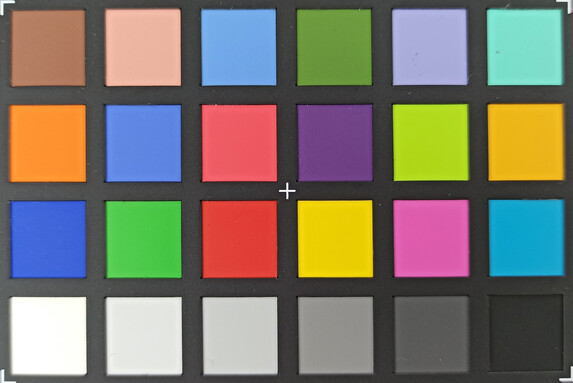
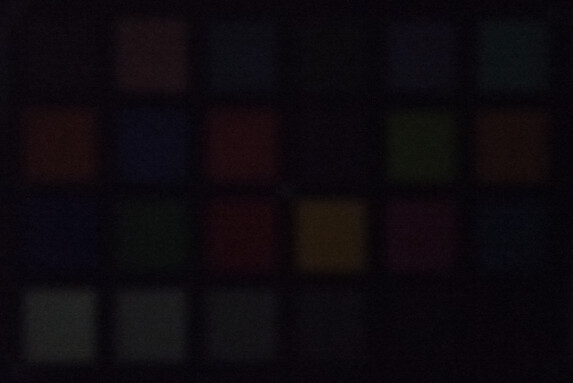
Accessories and Warranty - Note 8 Pro Comes with a Protective Case
Aside from the Redmi smartphone itself, the package contents include a USB cable, a protective case and a modular 18-W charger. Furthermore, our lender TradingShenzhen, has extended the scope of delivery of the Chinese version and included an EU adapter for local outlets as well as a USB-OTG adapter. Neither one is included by default and merely a service provided by our lender.
The warranty period is 12 months. Apart from the manufacturer's warranty, TradingShenzhen gives its customers the opportunity to mail the device to a German address in a warranty case. This way, time-intesive shipping to China can be circumvented within the first 12 months for the Chinese version.
Input Devices & Handling - Redmi Note 8 Pro Supports FaceUnlock & Fingerprint Sensor
The 6.53-inch display accurately registers inputs all the way to the edges of the touchscreen. The integrated fingerprint sensor on the back can also be used to quickly and reliably unlock the Note 8 Pro. The time for the display to wake up from standby mode is very short as well. However, the position of the sensor is unusual. Even after getting accustomed to it, fingers will occasionally land on a camera lens by accident. While the FaceUnlock feature of the front camera works reliably, it is only based on simple 2D facial recognition.
Display - Redmi Note 8 Pro with a Bright IPS Panel
The LC display of the Note 8 Pro measures 16.6 centimeters (6.53 inches) diagonally and offers Full-HD resolution with an aspect ratio of 19.5:9, which corresponds to 2,340 x 1,080 pixels. The native resolution and size of the IPS panel amount to a pixel density of just below 400 PPI, which ensures that display contents appear sharp.
When displaying a purely white image and with the ambient light sensor for controlling the display's brightness enabled, the liquid crystal screen achieves a high maximum brightness value of 669 cd/m². Additionally, we determined the brightness level for an evenly distributed portion of dark and bright areas (APL50). Here, we measured a brightness of 674 cd/m². The display achieves a luminance of just 498 cd/m² with the ambient light sensor disabled.
| |||||||||||||||||||||||||
Brightness Distribution: 87 %
Center on Battery: 669 cd/m²
Contrast: 1593:1 (Black: 0.42 cd/m²)
ΔE ColorChecker Calman: 4.8 | ∀{0.5-29.43 Ø4.78}
ΔE Greyscale Calman: 6.2 | ∀{0.09-98 Ø5}
92.6% sRGB (Calman 2D)
Gamma: 2.24
CCT: 7846 K
| Xiaomi Redmi Note 8 Pro IPS, 2340x1080, 6.5" | Xiaomi Mi 9 SE AMOLED, 2340x1080, 6" | Sony Xperia 10 IPS-LCD, 2520x1080, 6" | Huawei P30 Lite IPS LCD, 2312x1080, 6.2" | Xiaomi Redmi Note 8 IPS, 2340x1080, 6.3" | Samsung Galaxy A40 Super AMOLED, 2340x1080, 5.9" | |
|---|---|---|---|---|---|---|
| Screen | 28% | -2% | 5% | 21% | -23% | |
| Brightness middle (cd/m²) | 669 | 583 -13% | 547 -18% | 451 -33% | 656 -2% | 358 -46% |
| Brightness (cd/m²) | 630 | 577 -8% | 525 -17% | 430 -32% | 643 2% | 370 -41% |
| Brightness Distribution (%) | 87 | 97 11% | 93 7% | 90 3% | 95 9% | 94 8% |
| Black Level * (cd/m²) | 0.42 | 0.36 14% | 0.55 -31% | 0.54 -29% | ||
| Contrast (:1) | 1593 | 1519 -5% | 820 -49% | 1215 -24% | ||
| Colorchecker dE 2000 * | 4.8 | 1.6 67% | 4.6 4% | 1.4 71% | 1.1 77% | 7.4 -54% |
| Colorchecker dE 2000 max. * | 9 | 3.9 57% | 12.1 -34% | 4.4 51% | 2.4 73% | 12.5 -39% |
| Greyscale dE 2000 * | 6.2 | 2.7 56% | 3.9 37% | 2.5 60% | 2.2 65% | 4 35% |
| Gamma | 2.24 98% | 2.27 97% | 2.17 101% | 2.22 99% | 2.2 100% | 2.084 106% |
| CCT | 7846 83% | 6267 104% | 7158 91% | 6422 101% | 6263 104% | 7078 92% |
* ... smaller is better
Screen Flickering / PWM (Pulse-Width Modulation)
| Screen flickering / PWM not detected | |||
In comparison: 53 % of all tested devices do not use PWM to dim the display. If PWM was detected, an average of 8101 (minimum: 5 - maximum: 343500) Hz was measured. | |||
In our display tests, the IPS panel of the Note 8 Pro reaches a black value of 0.42 cd/m², which is an average result for an LC display in this price segment. That said, the contrast ratio of 1,593:1 is above average mainly due to the high maximum brightness. The results of our APL 50 measurements marginally increase the contrast ratio to 1,607:1, since the black value remains constant for evenly distributed bright and dark areas.
We also performed color analysis on the display, using a spectrophotometer and the CalMAN software. The color (4.8) and grayscale (6.2) deviations of the default profile are relatively high. At 7,846 kelvins, the color temperature of the display is too cool as well - this becomes apparent in the form of a faint blue tint in practice.
Display Response Times
| ↔ Response Time Black to White | ||
|---|---|---|
| 20 ms ... rise ↗ and fall ↘ combined | ↗ 6.8 ms rise | |
| ↘ 13.2 ms fall | ||
| The screen shows good response rates in our tests, but may be too slow for competitive gamers. In comparison, all tested devices range from 0.1 (minimum) to 240 (maximum) ms. » 42 % of all devices are better. This means that the measured response time is similar to the average of all tested devices (20.2 ms). | ||
| ↔ Response Time 50% Grey to 80% Grey | ||
| 38.4 ms ... rise ↗ and fall ↘ combined | ↗ 18.8 ms rise | |
| ↘ 19.6 ms fall | ||
| The screen shows slow response rates in our tests and will be unsatisfactory for gamers. In comparison, all tested devices range from 0.165 (minimum) to 636 (maximum) ms. » 56 % of all devices are better. This means that the measured response time is worse than the average of all tested devices (31.6 ms). | ||
Performance - Redmi Smartphone with Mediatek Helio G90T
Inside of the Redmi Note 8 Pro, the 12-nm chip Mediatek Helio G90T serves as the SoC. The Taiwanese manufacturer's Helio G90 series mainly tries to appeal to gamers and comes with integrated liquid cooling in the case of the Redmi cell phone. The MediaTek chipset includes an eight-core CPU cluster with 2 powerful Cortex A76 cores and an energy-efficient Cortex A55 cluster for simpler tasks. A Mali-G76 MP4 serves as the graphics unit.
Combined with 6 GB of LPDDR4X RAM, the Helio G90T makes for a subjectively good system performance. Animations are smooth and there is barely any stuttering. However, the performance somewhat falls off during multitasking. Furthermore, demanding applications such as games are not immediately removed from the cache, due to the rather large amount of RAM.
In our suite of benchmarks, the Redmi smartphone was able to claim first place. The benchmarks put the Note 8 Pro ahead of the Xiaomi Mi 9 SE with the Snapdragon 712 - the results of the synthetic tests put it approximately one category above the Qualcomm chipset. The Note 8 Pro also does well in the graphics tests, where the Mali-G76 MP4 performs about as well as the Adreno 616 of the Xiaomi phone.
| Basemark GPU 1.1 | |
| 1920x1080 Vulkan Medium Offscreen (sort by value) | |
| Xiaomi Redmi Note 8 Pro | |
| Xiaomi Mi 9 SE | |
| Xiaomi Redmi Note 8 | |
| Samsung Galaxy A40 | |
| Xiaomi Mi 9T | |
| Average Mediatek Helio G90T (n=1) | |
| Vulkan Medium Native (sort by value) | |
| Xiaomi Redmi Note 8 Pro | |
| Xiaomi Mi 9 SE | |
| Xiaomi Redmi Note 8 | |
| Samsung Galaxy A40 | |
| Xiaomi Mi 9T | |
| Average Mediatek Helio G90T (n=1) | |
| 1920x1080 OpenGL Medium Offscreen (sort by value) | |
| Xiaomi Redmi Note 8 Pro | |
| Xiaomi Redmi Note 8 Pro | |
| Xiaomi Mi 9 SE | |
| Xiaomi Redmi Note 8 | |
| Samsung Galaxy A40 | |
| Xiaomi Mi 9T | |
| Average Mediatek Helio G90T (18.1 - 18.1, n=2) | |
| AnTuTu v7 - Total Score (sort by value) | |
| Xiaomi Mi 9 SE | |
| Sony Xperia 10 | |
| Huawei P30 Lite | |
| Samsung Galaxy A40 | |
| Xiaomi Mi 9T | |
| VRMark - Amber Room (sort by value) | |
| Xiaomi Redmi Note 8 Pro | |
| Xiaomi Mi 9 SE | |
| Xiaomi Redmi Note 8 | |
| Samsung Galaxy A40 | |
| Xiaomi Mi 9T | |
| Average Mediatek Helio G90T (3243 - 3255, n=2) | |
Browsing the web with the Redmi Note 8 Pro is enjoyable. The separately installed Chrome browser allows users to quickly and smoothly navigate even complex web pages. As expected, the Redmi phone achieves good results in our browser benchmarks, although the Helio G90T has a slightly harder time with the WebXPRT tests.
| Jetstream 2 - 2.0 Total Score | |
| Average of class Smartphone (23.8 - 387, n=149, last 2 years) | |
| Xiaomi Mi 9 SE (Chrome 73) | |
| Average Mediatek Helio G90T (35.3 - 41.7, n=4) | |
| Xiaomi Redmi Note 8 Pro (Chrome 78) | |
| Huawei P30 Lite (Chrome 74) | |
| Xiaomi Redmi Note 8 (Chrome 78) | |
| Samsung Galaxy A40 (Chrome 73) | |
| Sony Xperia 10 (Chrome Version 73) | |
| JetStream 1.1 - Total Score | |
| Xiaomi Redmi Note 8 Pro (Chrome 78) | |
| Average Mediatek Helio G90T (69.8 - 72.1, n=4) | |
| Huawei P30 Lite (Chrome 74) | |
| Xiaomi Redmi Note 8 (Chrome 78) | |
| Samsung Galaxy A40 (Chrome 73) | |
| Speedometer 2.0 - Result 2.0 | |
| Average of class Smartphone (15.2 - 643, n=122, last 2 years) | |
| Xiaomi Redmi Note 8 Pro (Chrome 78) | |
| Xiaomi Mi 9 SE (Chrome 73) | |
| Average Mediatek Helio G90T (31.4 - 41.6, n=4) | |
| Huawei P30 Lite (Chrome 74) | |
| Xiaomi Redmi Note 8 (Chrome 78) | |
| Samsung Galaxy A40 (Chrome 73) | |
| WebXPRT 3 - Overall | |
| Average of class Smartphone (38 - 380, n=31, last 2 years) | |
| Xiaomi Mi 9 SE (Chrome 73) | |
| Huawei P30 Lite (Chrome 74) | |
| Xiaomi Redmi Note 8 Pro (Chrome 78) | |
| Average Mediatek Helio G90T (46 - 55, n=4) | |
| Samsung Galaxy A40 (Chrome 73) | |
| Xiaomi Redmi Note 8 (Chrome 78) | |
| Sony Xperia 10 (Chrome Version 73) | |
| Octane V2 - Total Score | |
| Average of class Smartphone (2228 - 121337, n=197, last 2 years) | |
| Average Mediatek Helio G90T (15061 - 16947, n=4) | |
| Xiaomi Redmi Note 8 Pro (Chrome 78) | |
| Xiaomi Mi 9 SE (Chrome 73) | |
| Huawei P30 Lite (Chrome 74) | |
| Xiaomi Redmi Note 8 (Chrome 78) | |
| Samsung Galaxy A40 (Chrome 73) | |
| Sony Xperia 10 (Chrome Version 73) | |
| Mozilla Kraken 1.1 - Total | |
| Sony Xperia 10 (Chrome Version 73) | |
| Samsung Galaxy A40 (Chrome 73) | |
| Xiaomi Redmi Note 8 (Chrome 78) | |
| Huawei P30 Lite (Chrome 74) | |
| Average Mediatek Helio G90T (2793 - 3782, n=4) | |
| Xiaomi Redmi Note 8 Pro (Chrome 78) | |
| Xiaomi Mi 9 SE (Chrome 73) | |
| Average of class Smartphone (257 - 28190, n=154, last 2 years) | |
| WebXPRT 2015 - Overall | |
| Xiaomi Mi 9 SE (Chrome 73) | |
| Samsung Galaxy A40 (Chrome 74) | |
| Xiaomi Redmi Note 8 | |
| Xiaomi Redmi Note 8 Pro | |
| Average Mediatek Helio G90T (116 - 144, n=2) | |
* ... smaller is better
The relatively fast UFS 2.1 storage of the Note 8 Pro performs well in our AndroBench benchmark. Compared to the competition, the Redmi smartphone may achieve significantly higher read and write speeds in some cases.
We also took a closer look at the microSD card slot. We tested its performance with the help of our reference card, the Toshiba Exceria Pro M501 (Write: 270Mbit/s, read: 150 Mbit/s). These results are typical for a smartphone in this price segment.
| Xiaomi Redmi Note 8 Pro | Xiaomi Mi 9 SE | Sony Xperia 10 | Huawei P30 Lite | Xiaomi Redmi Note 8 | Samsung Galaxy A40 | Average 128 GB UFS 2.0 Flash | Average of class Smartphone | |
|---|---|---|---|---|---|---|---|---|
| AndroBench 3-5 | -31% | -27% | -24% | -27% | -35% | -11% | 338% | |
| Sequential Read 256KB (MB/s) | 535 | 492.5 -8% | 273.8 -49% | 293.2 -45% | 297.6 -44% | 295 -45% | 530 ? -1% | 2228 ? 316% |
| Sequential Write 256KB (MB/s) | 193.5 | 190.1 -2% | 232.9 20% | 158.6 -18% | 160.5 -17% | 99.6 -49% | 212 ? 10% | 1852 ? 857% |
| Random Read 4KB (MB/s) | 156.2 | 115.8 -26% | 53.1 -66% | 71.6 -54% | 84.8 -46% | 75.7 -52% | 130.6 ? -16% | 296 ? 90% |
| Random Write 4KB (MB/s) | 180.4 | 21.86 -88% | 14.39 -92% | 87.3 -52% | 91.2 -49% | 13.2 -93% | 101.2 ? -44% | 339 ? 88% |
| Sequential Read 256KB SDCard (MB/s) | 71.6 ? | 83.2 ? 16% | 76.8 ? 7% | 71.6 ? 0% | 81.2 ? 13% | 68.3 ? -5% | ||
| Sequential Write 256KB SDCard (MB/s) | 57.3 ? | 63.8 ? 11% | 67.8 ? 18% | 52.8 ? -8% | 65.2 ? 14% | 53.2 ? -7% |
Gaming - Mali-G76 MP4 with a Lot of Graphics Performance
The Helio G90 series was supposedly created with gamers in mind, the installed Mali-G76 MP4 only integrates a third of the clusters that the Exynos 9820 in the Samung Galaxy S10 integrates, however. Thus, the graphics unit of the Helio G90T is less well-suited to gaming, at least judging from the specifications.
In order to take a closer look at a few demanding games from the Play Store, we used the app GameBench. The racing game Asphalt 9 Legends as well as the shooter games PUBG Mobile and Dead Trigger 2 run at a relatively consistent frame rate at high graphics settings. We did not observe major dropoffs in terms of the frame rate. That said, the graphics unit of the Note 8 Pro is not particularly future-proof.
PUBG Mobile
Asphalt 9 Legends
Dead Trigger 2
Emissions - Redmi Smartphone's Speaker Is Not Very Linear
Temperature
Similarly, the noticeable heat development of the Note 8 Pro under load negatively impacts gaming. We used the battery test of GFXBench to observe the performance behavior of the Redmi smartphone under prolonged stress. The Manhattan 3.1 test shows that as the load level increases, the frame rate decreases. The performance level fluctuations can be as high as 20 percent. As a consequence, the Note 8 Pro is likely to suffer from a performance dropoff during prolonged gaming sessions. Our stress test also caused the mid-range phone to show us an overheating notification.
(+) The maximum temperature on the upper side is 37.1 °C / 99 F, compared to the average of 35.2 °C / 95 F, ranging from 21.9 to 247 °C for the class Smartphone.
(+) The bottom heats up to a maximum of 36.6 °C / 98 F, compared to the average of 34 °C / 93 F
(+) In idle usage, the average temperature for the upper side is 30 °C / 86 F, compared to the device average of 32.9 °C / 91 F.
Speaker
As with the smaller sibling Note 8, the Note 8 Pro uses an ultra linear speaker. However, the mono speaker only achieves a disappointing maximum volume level of 79 dB(A). Our measurements further indicate a frequency progression that is not very linear in terms of the mid tones and very high frequencies fall off significantly as well. Bass is not present on the sound stage. Users who want a more accurate sound representation should use wired or wireless headphones. Apart from the traditional 3.5-mm audio jack, users may rely on the modern Bluetooth 5.0 standard. The audio output is clear and powerful.
Xiaomi Redmi Note 8 Pro audio analysis
(±) | speaker loudness is average but good (79.3 dB)
Bass 100 - 315 Hz
(-) | nearly no bass - on average 23.2% lower than median
(±) | linearity of bass is average (11.8% delta to prev. frequency)
Mids 400 - 2000 Hz
(+) | balanced mids - only 4.5% away from median
(+) | mids are linear (4.2% delta to prev. frequency)
Highs 2 - 16 kHz
(±) | higher highs - on average 5.3% higher than median
(+) | highs are linear (3.8% delta to prev. frequency)
Overall 100 - 16.000 Hz
(±) | linearity of overall sound is average (25.6% difference to median)
Compared to same class
» 63% of all tested devices in this class were better, 7% similar, 30% worse
» The best had a delta of 11%, average was 35%, worst was 134%
Compared to all devices tested
» 78% of all tested devices were better, 5% similar, 17% worse
» The best had a delta of 4%, average was 24%, worst was 134%
Xiaomi Redmi Note 8 audio analysis
(+) | speakers can play relatively loud (87.7 dB)
Bass 100 - 315 Hz
(-) | nearly no bass - on average 30.6% lower than median
(±) | linearity of bass is average (11.8% delta to prev. frequency)
Mids 400 - 2000 Hz
(+) | balanced mids - only 2.8% away from median
(+) | mids are linear (3.1% delta to prev. frequency)
Highs 2 - 16 kHz
(+) | balanced highs - only 4.6% away from median
(+) | highs are linear (3.2% delta to prev. frequency)
Overall 100 - 16.000 Hz
(±) | linearity of overall sound is average (19% difference to median)
Compared to same class
» 24% of all tested devices in this class were better, 9% similar, 67% worse
» The best had a delta of 11%, average was 35%, worst was 134%
Compared to all devices tested
» 44% of all tested devices were better, 8% similar, 48% worse
» The best had a delta of 4%, average was 24%, worst was 134%
Battery Life - Redmi Note 8 Pro with 4,500 mAh Battery
Energy Consumption
The Redmi smartphone has a large 4,500 mAh battery, which can be fully recharged within 2 hours thanks to Quick Charge. The Note 8 Pro is not a particularly economical device.
| Off / Standby | |
| Idle | |
| Load |
|
Key:
min: | |
| Xiaomi Redmi Note 8 Pro 4500 mAh | Xiaomi Mi 9 SE 3070 mAh | Sony Xperia 10 2870 mAh | Huawei P30 Lite 3340 mAh | Xiaomi Redmi Note 8 4000 mAh | Samsung Galaxy A40 3100 mAh | Average Mediatek Helio G90T | Average of class Smartphone | |
|---|---|---|---|---|---|---|---|---|
| Power Consumption | 41% | 17% | -3% | 24% | -5% | 2% | -7% | |
| Idle Minimum * (Watt) | 0.79 | 0.53 33% | 0.72 9% | 0.91 -15% | 0.62 22% | 0.8 -1% | 0.993 ? -26% | 0.842 ? -7% |
| Idle Average * (Watt) | 2.32 | 1.18 49% | 2.16 7% | 2.41 -4% | 1.77 24% | 1.4 40% | 1.79 ? 23% | 1.439 ? 38% |
| Idle Maximum * (Watt) | 2.38 | 1.2 50% | 2.17 9% | 2.43 -2% | 1.8 24% | 2.3 3% | 1.985 ? 17% | 1.624 ? 32% |
| Load Average * (Watt) | 4.72 | 3.04 36% | 3.32 30% | 4.57 3% | 3.42 28% | 7.4 -57% | 4.78 ? -1% | 7.03 ? -49% |
| Load Maximum * (Watt) | 7.68 | 4.83 37% | 5.34 30% | 7.57 1% | 6.14 20% | 8.6 -12% | 7.94 ? -3% | 11.3 ? -47% |
* ... smaller is better
Battery Life
In our Wi-Fi and video test, both of which aim to mirror real-world conditions, the Note 8 Pro lasts 14.5 hours and 16.5 hours, respectively, at a brightness level of 150 cd/m² and thus claims the first place in our comparison.
| Xiaomi Redmi Note 8 Pro 4500 mAh | Xiaomi Mi 9 SE 3070 mAh | Sony Xperia 10 2870 mAh | Huawei P30 Lite 3340 mAh | Xiaomi Redmi Note 8 4000 mAh | Samsung Galaxy A40 3100 mAh | |
|---|---|---|---|---|---|---|
| Battery runtime | -20% | -28% | -28% | -1% | -6% | |
| Reader / Idle (h) | 31.6 | 22.9 -28% | 16.8 -47% | 20.8 -34% | 35.7 13% | 28.2 -11% |
| H.264 (h) | 16.4 | 14.2 -13% | 10.3 -37% | 11.4 -30% | 14.3 -13% | 13.8 -16% |
| WiFi v1.3 (h) | 14.4 | 8.5 -41% | 9 -37% | 8.6 -40% | 13.7 -5% | 10.7 -26% |
| Load (h) | 3.5 | 3.6 3% | 3.9 11% | 3.3 -6% | 3.6 3% | 4.6 31% |
Pros
Cons
Verdict - MediaTek SoC Version Is Worth It
Redmi's latest mid-range flagship smartphone makes a good impression in our test overall and in light of its price of about 220 Euros (~$244) for the international version, does not warrant a lot of criticism. That said, the heat development in conjunction with the SoC's throttling behavior as well as the fairly mediocre mono speaker and the position of the fingerprint sensor have to be taken into account.
While the Redmi Note 8 Pro should not necessarily be the first choice for gamers, it is currently still one of the best mid-range smartphones.
Even though the Snapdragon-powered Note 8 may look like a better choice on paper, the Pro variant's MediaTek SoC is able to produce very convincing results during daily use. Here, the performance level is good in practice and the SoC performs about as well as a Qualcomm 700-series chip.
Unlike the Note 8, the Pro model of the Redmi smartphone shines with a solid main camera. The Samsung GW1 captures highly detailed pictures in daylight that put it on par with the Sony IMX 582 image sensor.
Xiaomi Redmi Note 8 Pro
- 11/18/2019 v7 (old)
Marcus Herbrich




